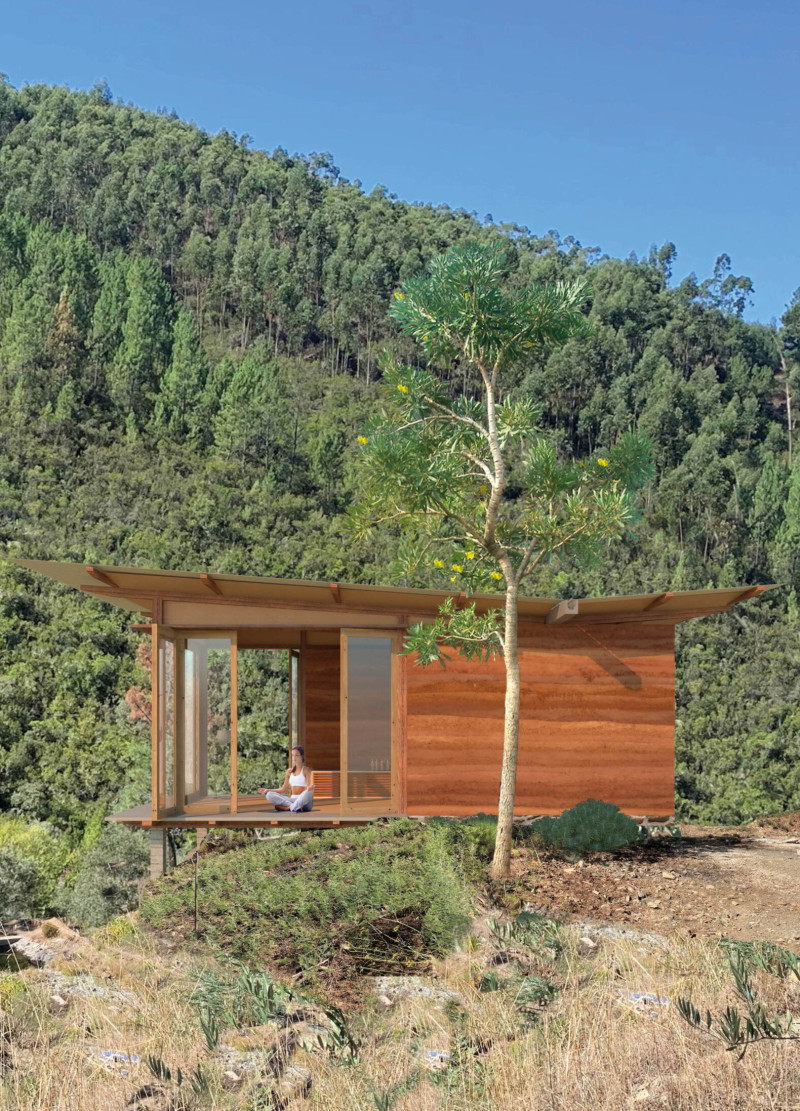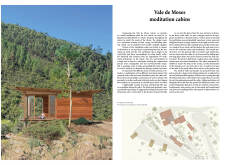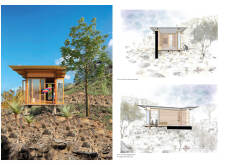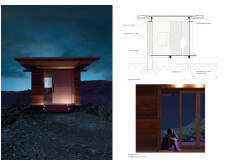5 key facts about this project
The cabins’ modular design allows for flexibility in use while minimizing the ecological footprint. Each unit is strategically positioned to maximize natural light and views, enhancing the connection between the interior and exterior environments. The overall layout emphasizes privacy while allowing for communal spaces that promote interaction among users.
Sustainable Material Selection
One of the distinctive features of this project is the thoughtful selection of materials that were utilized in the construction of the cabins. The primary materials employed include lightweight timber, rammed earth, glass, and metal. This combination serves multiple purposes: timber offers structural support and visual warmth, rammed earth provides thermal efficiency, and glass facilitates a connection with the environment while ensuring ample natural light. The durability of the metal roofing complements the overall design while protecting the interiors from the elements.
The use of local resources further enhances the project’s sustainability. Elements such as rammed earth reflect traditional building techniques in the region, promoting a sense of cultural continuity. Additionally, the integration of rainwater harvesting systems and potential for photovoltaic elements underscore the project’s focus on eco-friendly practices.
Innovative Architectural Approaches
The architectural approach adopted for the Vale de Moses meditation cabins reflects a contemporary understanding of user-centric design. Each cabin is elevated on stilts, reducing ground disturbance and allowing for natural water drainage. This approach addresses the environmental context and minimizes ecological impact.
The large expanses of glazing in the cabins’ design create a seamless transition between indoor and outdoor spaces. This not only reinforces the connection to nature but also enhances the sensory experience of occupants. Moreover, the modular aspect of the design allows for scalability, accommodating varying numbers of visitors without compromising the retreat’s ethos.
The layout promotes solitude while ensuring access to communal areas for social interaction. These spaces are designed to be functional yet comforting, contributing to an overall environment that fosters relaxation and contemplation.
Potential users are encouraged to delve into the architectural plans, sections, and designs of the Vale de Moses meditation cabins to gain a comprehensive understanding of the project’s intention and execution. Expert insights into architectural ideas presented throughout the design will facilitate a deeper appreciation of the harmonious relationship established between architecture and the natural landscape.


























